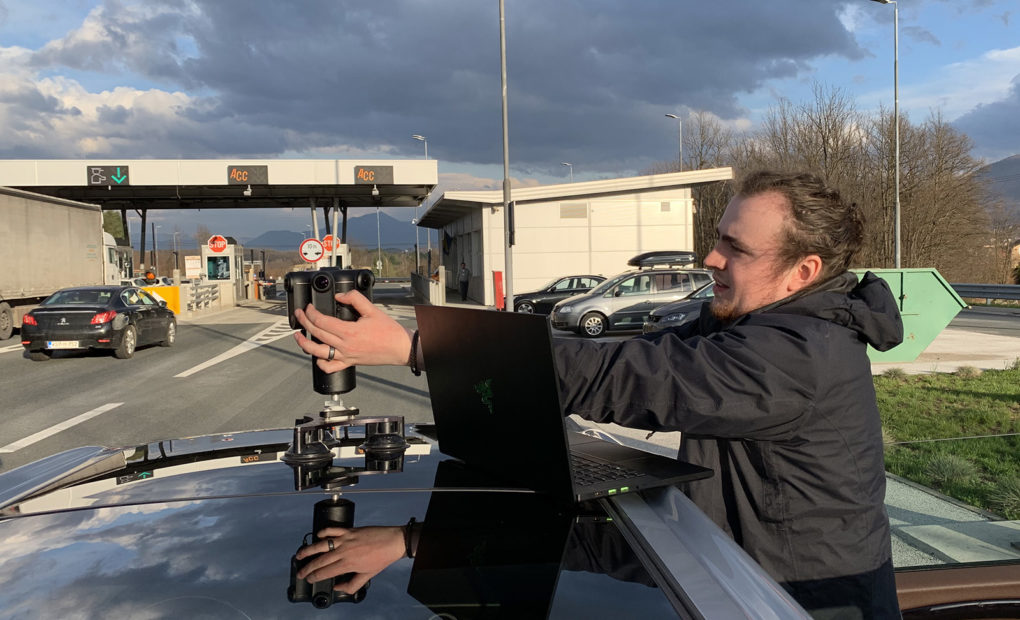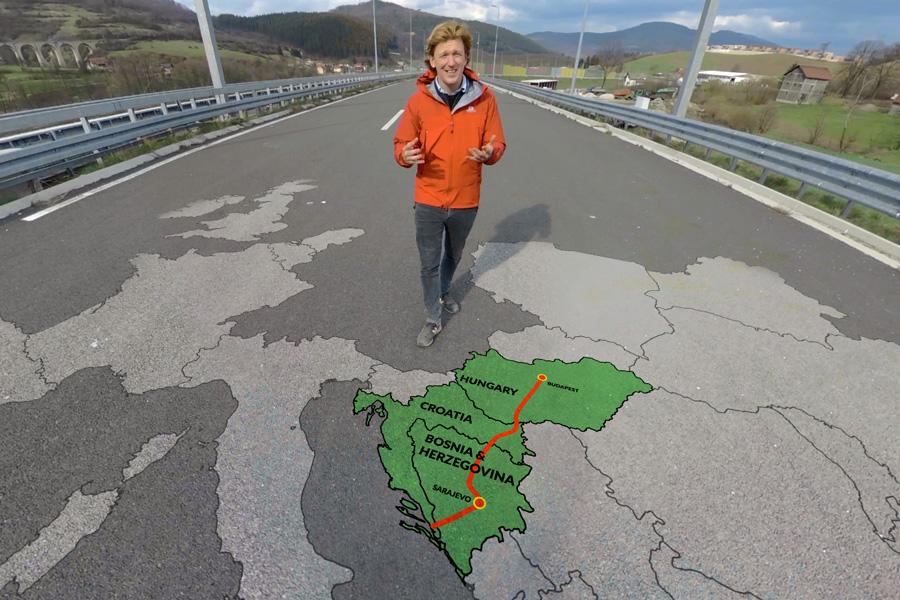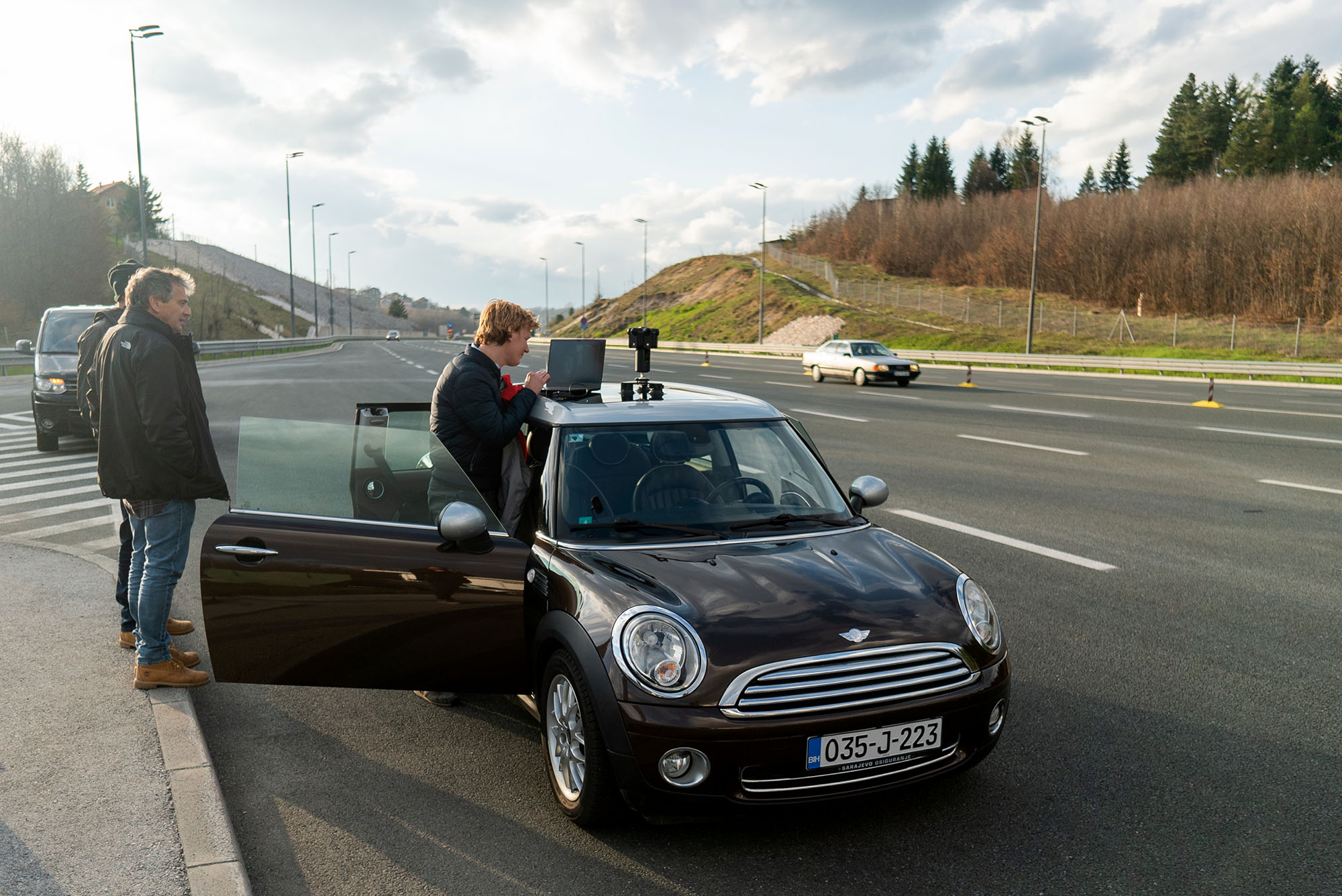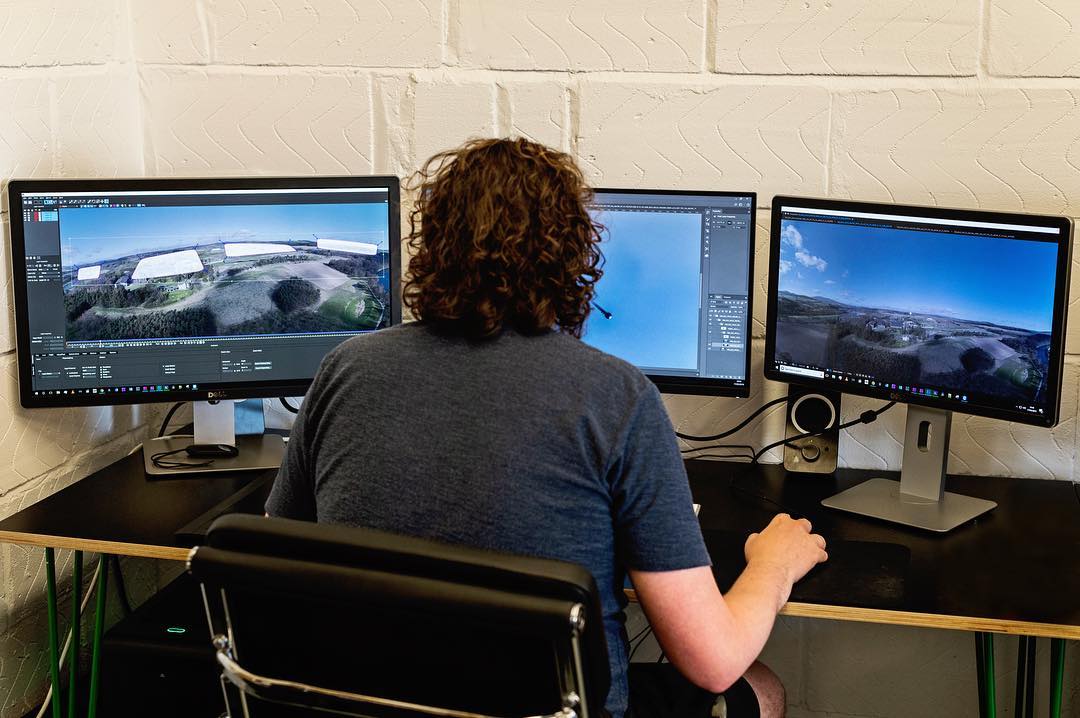
Behind-the-Scenes in Bosnia with Jack Churchill
Kandao, the VR camera specialists, recently sat down with one of our team, Jack Churchill, to discuss our recent project with the European Bank for Reconstruction and Development (EBRD) in Bosnia. Jack is a VR-specialist through and through, being both an experienced camera operator and a whizz with post-production, and was part of a small team we sent to Bosnia back in May.
Below is a condensed version of the interview originally posted on the Kandao site and you can read our case study on the project here.

Tell us a bit about your team and the Bosnia construction project.
The construction project sees the creation of Corridor Vc (5c), an essential highway that will span the whole of Bosnia and Herzegovina, connecting from the port of Ploce in the south to the border with Croatia in the north – then extending through Croatia and into Hungary. The film was a collaboration between the EBRD and Visualise, with Visualise providing VR technical support to the direction and narrative produced by the EBRD. Jonathan Wells, the presenter in the film, doubled as the director – scripting the narrative and developing the overall story to align with the EBRD’s involvement within construction. Producer Leslie Zunz worked closely with the local construction companies in order to gain access to the locations, and was joined on location by sound engineer Phil Wade and myself, Jack Churchill, VR specialist and camera operator. Although a small team, we all had our roles and could contribute a great deal to the film. In addition to being the on-location camera operator, I also completed the post-production. Being so heavily involved in the production process allowed me the ability to save a considerable amount of time in post as I was able to set up shots to favour what is possible further down the line. Likewise, I was able to push the ability of Kandao Obsidian R further as I knew what was needed in post to achieve great looking shots.
Why did you choose the Kandao Obsidian R camera as the main camera for the project?
We decided to use the Obsidian R as it allowed us high resolution footage, whilst also delivering clean stitches, fast speed on-location and live preview. We also use Kandao’s Wifi Battery pack when shooting with the R as this gives us the added stability to Wi-Fi and extended battery life whilst shooting. The final output of the film was for OculusGo VR headsets, so quality was a big consideration for us, and shooting at full 8K allows for a very sharp downscale for a 4K output. Although we produced this film in monoscopic due to the fast turnaround, we shot in such a way that would allow us to revisit the project with stereoscopic in mind.

There’s a great variety of drone, car and static shots in the video. How did you plan & execute these?
Adding extra variety in shots was always a key consideration for us whilst planning. We knew that drone shots would form a big part of the narrative as we needed to show the road clearly from the air to see its scale within the landscape. We used a local drone crew who had a variety of options to help us capture these aerial shots. Primarily, we used the Obsidian R on a larger drone, also mounting a GoPro Fusion on the top to give additional help with drone removal in post-production. We also developed the car shots to show the point of view driving along the road, using suction cup rigging to mount the Obsidian to the sunroof. Car interiors are notoriously tricky in VR, but as the Obsidian R has such a wide field of view on each lens, it allowed more flexibility to hide stitch lines and create multiple plates to rebuild the interior.
Take us through how you approached the post-production on this project.
With regards to post-production at Visualise, we’ve settled into a robust routine working in Mistika VR, Premiere Pro and After Effects. We do all our of stitching in Mistika, using a mixture of pre-built templates, Kandao’s own stitching software and the Calibration tool to create base offline stitches that we can develop and refine later in the online. From there we edit in Premiere Pro, using proxy offline stitches to select the best shots and takes. Then in a traditional film manner, we work with the client to develop the edit until they’re happy and we’ve achieved picture lock.
This is where the fun starts. Having finalised the timings of each shot, we then return to Mistika and fine stitch each shot, using the given times from the edit. By focusing only on the specific parts of the clip we’re going to use, we don’t waste any time or data when exporting these high quality fine stitches. Our next step is to individually clean up each of these shots, removing any rigging, drones, tripods and crew. Using After Effects as a base for this clean up phase, Mocha Pro and Photoshop add to the tools to help remove and rebuild shots.
All of this is working at 8K and large file sizes, therefore the powerful network and multi-workstation setup at Visualise is important to be able to speedily process the footage. Two key shots that demanded more attention on this project were the cage interview and the car interior. Hiding sitchlines in these was tricky and called for multiple stitches so that we could rebuild the scene within After Effects. Each scene took three individual stitches to allow enough overlap between lenses to create the final stitch. Finally, we rebuilt the offline edit in Premiere Pro, adding graphics, applying a colour grade and attaching the audio mix.


Comments